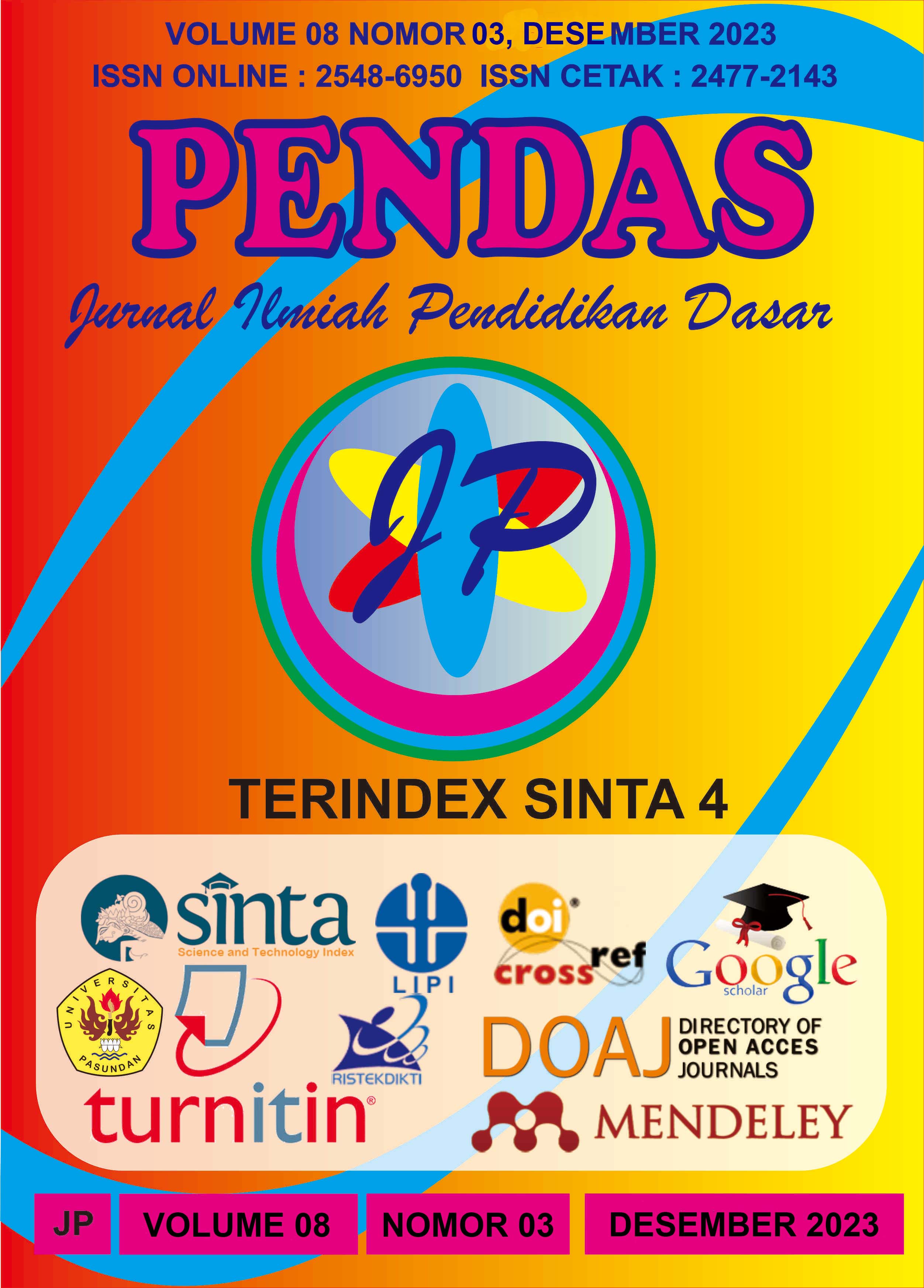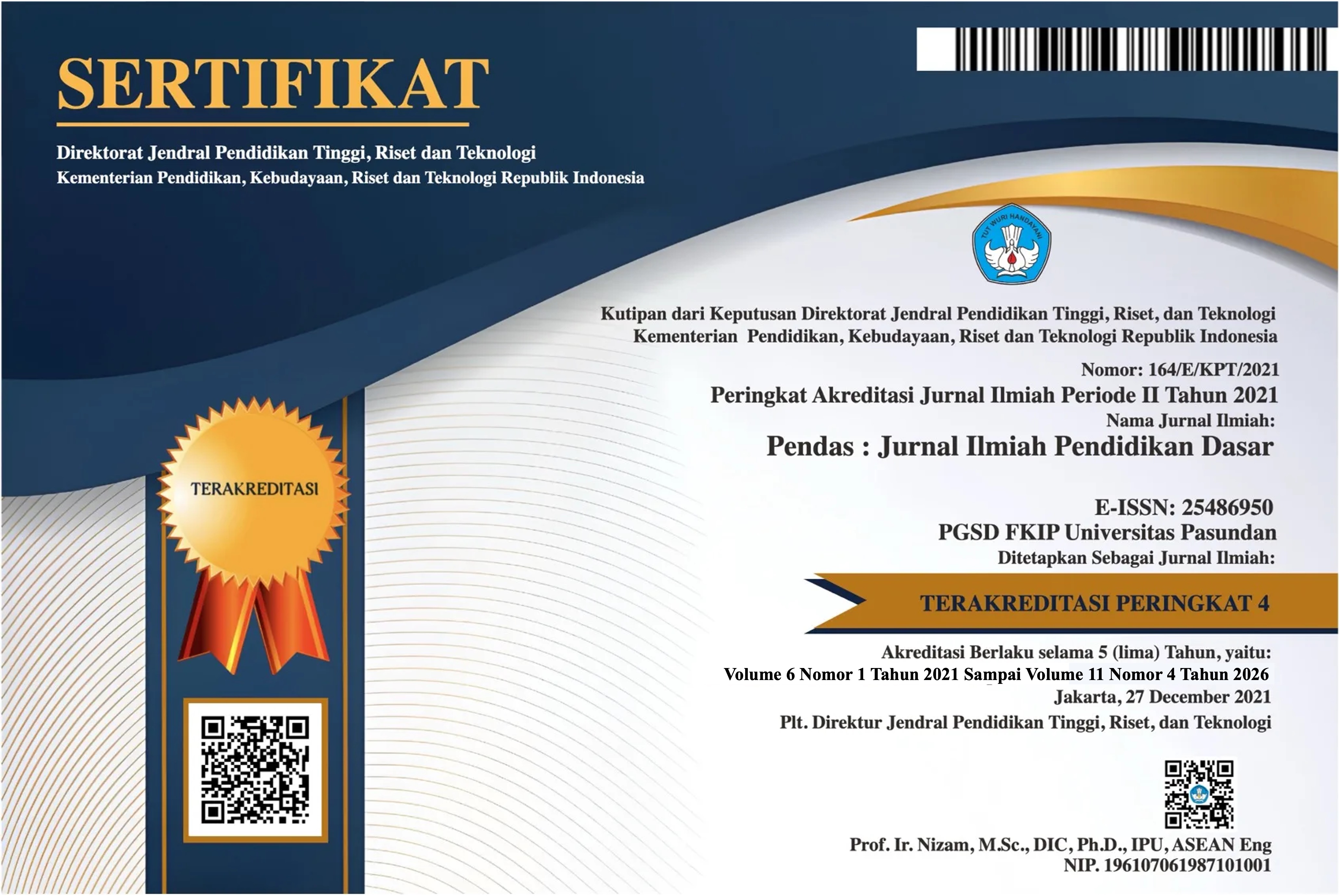MATHEMATICS THINGKING SISWA KELAS IV SD PADA MATERI GEOMETRI MELALUI MODEL PROBLEM BASED LEARNING
DOI:
https://doi.org/10.23969/jp.v8i3.10974Keywords:
problem-based learning, mathematics thingking, geometryAbstract
The knowledge of fourth-grade elementary school students about plane geometry, especially flat figures, the use of formulas, and difficulty in understanding problems and solving questions, is not optimal. Most students have difficulty solving questions about the perimeter and area of flat figures. Students usually fail to develop knowledge of plane figure material. The aim of the research is to analyze and evaluate the influence of open and structured Problem-Based Learning (PBL) teaching methods on improving students’ mathematical thinking abilities, considering the interaction between learning, students’ mathematical ability levels, and school qualifications, as well as assessing the difference in mathematical disposition between students who follow open PBL and structured PBL. The research uses an experimental approach comparing between experimental and control groups. Both the experimental and control group designs were given pre-tests and post-tests. The fourth-grade elementary school tested consists of several schools that have parallel classes in the Peusangan sub-district. The school qualifications tested meet three criteria: good, sufficient, and lacking. The research results show that the relationship between the learning model and school qualifications does not impact students’ mathematical thinking abilities. Students in structured and open PBL have different mathematical thinking abilities. Students in open PBL learning have better mathematical thinking abilities compared to students in structured PBL learning. In addition, the interaction between the learning model and students’ abilities affects their mathematical disposition.Downloads
References
Fauzi & Arisetyawan. 2022. “Analisis Kesulitan Belajar Siswa pada Materi Geometri di Sekolah Dasar.” 2(7): 659–64.
Fernandita Ardhianti. 2017. “Efektifitas penggunaan video sebagai media pembelajaran untuk siswa sekolah dasar.” Seminar Nasional Teknologi Pembelajaran Dan … 97(1): 15. https://core.ac.uk/download/pdf/267023793.pdf.
Hafizha, Dina, Rizki Ananda, dan Iis Aprinawati. 2022. “Analisis Pemahaman Guru Terhadap Gaya Belajar Siswa Di Sdn 020 Ridan Permai.” Jurnal Review Pendidikan Dasar : Jurnal Kajian Pendidikan dan Hasil Penelitian 8(1): 25–33.
Hanan, Marisa Puspa, dan Jesi Alexander Alim. 2023. “Analisis Kesulitan Belajar Matematika Siswa Kelas Vi Sekolah Dasar Pada Materi Geometri.” Al-Irsyad Journal of Mathematics Education 2(2): 59–66.
Marzuki. 2021. “Pendekatan Matemetika Mental Meningkatkan Hasil Belajar Siswa Pada Materi Pengurangan Kelas Iv Sd Negeri 10 Jangka Kabupaten Bireuen.” Jupendas: Jurnal Pendidikan Dasar 8(1): 9–13.
Naja, Finsensius Yesekiel, dan Agustina Mei. 2023. “Penerapan Problem Based Learning untuk Materi Geometri Bangun Datar pada Siswa Kelas VIII SMP.” Jurnal Cendekia : Jurnal Pendidikan Matematika 7(1): 924–31.
Sari, Melania Wahyu Novita, dan Gamaliel Septian Airlanda. 2022. “Pengembangan E-book dengan Strategi Problem Based Learning dalam Berpikir Kritis dan Kreatif.” EDUKATIF : JURNAL ILMU PENDIDIKAN 4(4).
Widiani, Santy. 2018. “PEMBELAJARAN BERBASIS MASALAH UNTUK MENINGKATKAN KEMAMPUAN BERPIKIR KRITIS DAN KREATIF MATEMATIS SISWA SEKOLAH DASAR.” Didaktik : Jurnal Ilmiah PGSD STKIP Subang 4(1).
Zuhriyah, Aminah. 2022. “Model Pembelajaran Kolaboratif Teknik Pemecahan Masalah Untuk Meningkatkan Kemampuan Kreativitas Berpikir Matematika Siswa.” Jurnal Ilmu Pendidikan (JIP) STKIP Kusuma Negara 13(2): 100–108.
Zulkarnaen, Rafiq. 2020. “Konsepsi Siswa dalam Proses Pemodelan Matematis.” SJME (Supremum Journal of Mathematics Education) 4(2).
Downloads
Published
Issue
Section
License
Copyright (c) 2023 Pendas : Jurnal Ilmiah Pendidikan Dasar

This work is licensed under a Creative Commons Attribution 4.0 International License.



















